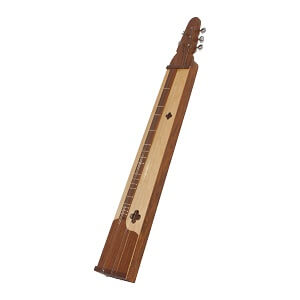Scheitholt
 The scheitholt is a German folk instrument first mentioned in the 1619 book Syntagma Musicum II by the German composer Michael Praetorius. In this work, Praetorius reveals that the scheitholt of that time was around 42 inches long, had four strings, and used frets that were unevenly spaced along a soundboard.
The scheitholt is a German folk instrument first mentioned in the 1619 book Syntagma Musicum II by the German composer Michael Praetorius. In this work, Praetorius reveals that the scheitholt of that time was around 42 inches long, had four strings, and used frets that were unevenly spaced along a soundboard.
The scheitholt is a type of zither. Zither is a German word that comes from the Latin instrument cithara. The cithara originated in ancient Greece and would eventually give rise to instruments such as the guitar and the scheitholt. Citharas have strings and a wooden sounding box.
The number of strings on the scheitholt increased over time. Early versions had three or four strings, similar to the one in the Praetorius drawing. By the 19th century, many scheitholts had six strings and larger sound boxes. Eventually, the instrument would leave behind its medieval origins and evolve into what is known today as the Appalachian dulcimer.
It’s important to note that not all scheitholt music was sacred or even played with a bow. In the above video, a scheitholt is quickly strummed to produce a lively, uptempo tune. Songs likes these certainly could have accompanied celebrations and dances.